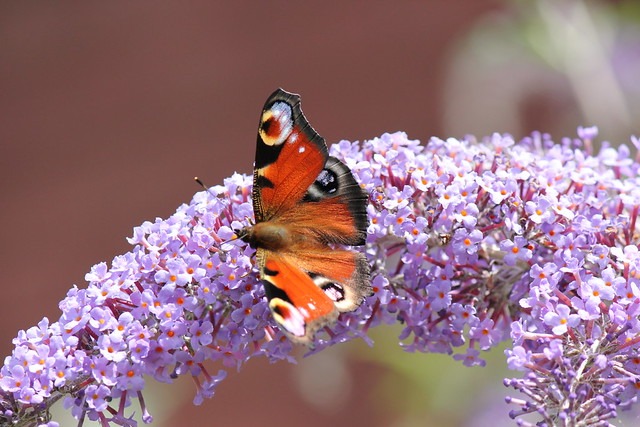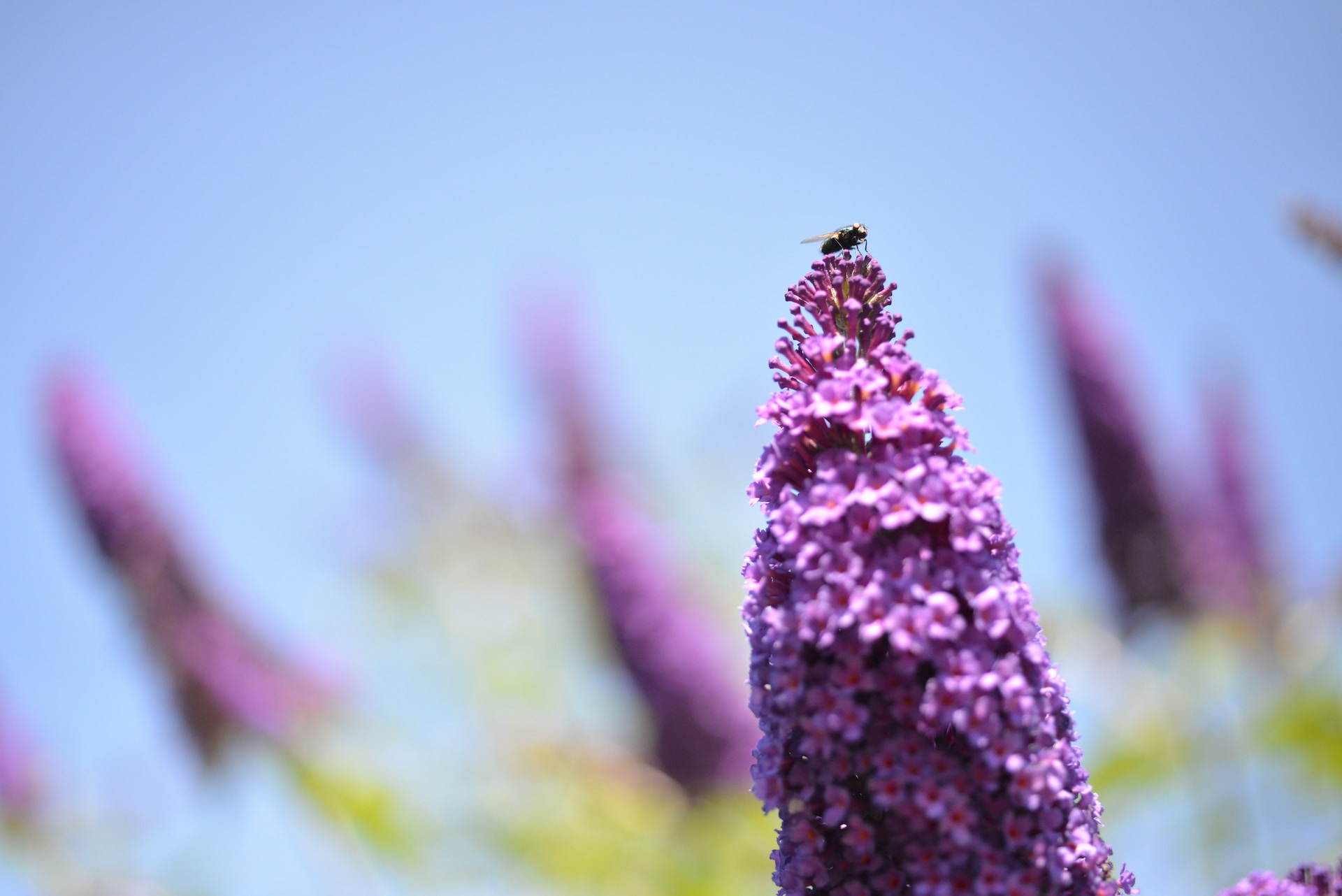Buddleia’s History in The UK: The Butterfly Bush’s Impact and Management
Buddleia, also known as Buddleja, buddlea, the butterfly bush, or summer lilac, has a rich history in the United Kingdom. Often touted as ‘the butterfly bush,’ it’s a popular shrub that graces many gardens across the country. However, what was once a beloved addition to our landscapes has turned into a persistent challenge. Imported to the UK in the late 1800s, Buddleia quickly established itself in various corners of the country. By the 1930s, it had become a common sight in the wild, and its spread accelerated with a surge in sales during the 1950s and 60s, making control increasingly elusive.
The Common Buddleia Species: ‘Davidii’
The most recognisable variety of Buddleia in the UK is the common species known as ‘davidii.’ Chances are, you’ve come across it more often in abandoned plots and on the brickwork of old bridges than in gardens. With its semi-deciduous, multi-stemmed structure, Buddleia ‘davidii’ bursts into clusters of fragrant, nectar-rich, and usually purple flowers in late spring and throughout the summer. These blossoms are a magnet for pollinators, attracting hundreds of hungry insects during the flowering season.
Mitigating Buddleia’s Impact on Rail Networks
For railway managers and individuals responsible for maintaining the railway track network in the UK, the invasion of Buddleia can indeed be a significant concern. As described by the Non-Native Species Secretariat, Buddleia poses “significant” challenges, particularly in the context of rail infrastructure.
Network Rail has firsthand experience dealing with the encroachment of Buddleia on their tracks and rail infrastructure. While it may not directly block train lines, this persistent shrub has a knack for establishing itself in places where it becomes more than just a minor inconvenience. Buddleia has a tendency to grow on walls, potentially interfering with overhead power lines and obscuring vital signals. These issues may not be classified as “serious” in terms of train operations, but they are far from inconsequential. The time and resources required to address Buddleia-related problems can be a substantial burden on rail management.
While Buddleia may not be a direct threat to train lines, its ability to grow in inconvenient and potentially hazardous locations demands proactive management strategies. Railway managers and those responsible for maintaining the UK’s rail infrastructure understand the importance of addressing Buddleia-related challenges promptly and efficiently. By implementing a combination of control measures, Network Rail and other rail management authorities can ensure that Buddleia does not impede the smooth operation of the rail network. This approach is essential to preserving the safety and efficiency of the UK’s railway systems.

The Problem with Buddleia
While Buddleia’s flowering beauty might suggest a harmonious relationship with nature, a deeper look reveals a more complex picture. Buddleia’s allure for pollinators diverts their attention from native plant species, reducing the likelihood of fertilisation for the latter. This, in turn, results in fewer seeds being produced, contributing to the decline of already vulnerable plant species.
Buddleia’s Prolific Seed Production and Spread
One of the most concerning aspects of Buddleia is its astonishingly prolific seed production. It’s estimated that a single Buddleia flower spike can yield over 40,000 seeds. Under favourable conditions, a Buddleia plant can start producing viable seeds at just one or two years of age. These seeds are tiny and lightweight, easily carried by the wind over long distances. Combined with an excellent germination rate of 80% or more and a viability of up to five years, Buddleia’s seed production poses a significant threat to less robust plant species.
This explains why Buddleia is often one of the first plants to colonise abandoned plots or areas where the soil has been disturbed or cleared. Once established in a new location, especially one that lacks maintenance, Buddleia can swiftly invade and dominate the space. Controlling Buddleia becomes increasingly challenging once it forms stands that crowd out other plants, and eradicating it from these areas is a formidable task.
Buddleia’s Impact on Built Structures
Buddleia’s negative influence extends beyond the realm of nature. It inflicts significant damage on built structures, with rail networks being particularly vulnerable. The Non-Native Species Secretariat has categorised this problem as ‘significant.’ In fact, a 2010 study by CABI estimated that over £960,000 was spent annually in the UK to rectify issues caused by Buddleia growing in undesirable places. If you’ve ever noticed a plant sprouting from a brick wall, gutter, or the side of a bridge, there’s a good chance it’s Buddleia.
The Role of Garden Centres
It’s important to note that garden centres aren’t necessarily culprits prioritising sales over native flora and ecosystems. However, they do play a part in the Buddleia problem we face today. Fortunately, in the mid-1990s, many growers and retailers recognized the issue and began developing smaller cultivars. More significantly, some cultivars are now sterile or produce fewer seeds. If you’re determined to have a Buddleia, consider seeking out these varieties. Even better, opt for a native shrub instead to support local biodiversity.
Controlling Buddleia
Preventing Buddleia from spreading is relatively straightforward. One effective method is to remove the flowers before they have a chance to set seed. After cutting, dry the clippings quickly and compost them in a sealed bag. However, if you have a large Buddleia, this may be challenging. Regular pruning can also limit the plant’s size and flower production.
Eradicating Buddleia
Eradicating Buddleia from your garden or other locations can be achieved through different methods, depending on the size of the plant.
Larger Buddleia Plants:
For larger specimens, excavation can often eliminate the plant in one go. However, stumps left behind tend to regrow, and to prevent this, specialised herbicide plugs can be inserted into drilled holes in the stump. These plugs contain a slow-release herbicide that gradually kills the remaining plant. Using these plugs typically requires professional expertise, as they are not available in DIY stores.
Smaller Buddleia Plants:
Smaller Buddleia shrubs can be treated with herbicide through spray application. Multiple doses may be necessary to completely eliminate the plant, and, as with larger plants, professional help is often the best approach.
Very Small Buddleia:
Pulling very small Buddleia seedlings out of the ground is relatively easy. However, be prepared for ongoing maintenance, as Buddleia seedlings may continue to sprout for several years.
Final Thoughts
If you’ve had a Buddleia in your garden for an extended period, you might find baby Buddleias popping up for years after its removal. It’s essential to be diligent in monitoring and managing this resilient plant. In conclusion, Buddleia’s captivating appearance and fragrance should not overshadow its detrimental impact on native plant species and built structures. Responsible management, selective cultivation, and eradication techniques can help mitigate its adverse effects and protect the UK’s native flora and ecosystems.
Enhance Rail Network Efficiency
If you are a decision maker in the world of railway operations, tasked with ensuring the seamless functionality of your rail network, we understand the critical importance of keeping your tracks clear and your stations in pristine condition. That’s why we offer a range of innovative Buddleia management solutions to support your mission.
Get in touch today +44 (0)1285 704373
Or arrange an appointment for a quick call
Resources
Network Rail – https://www.networkrail.co.uk/running-the-railway/looking-after-the-railway/vegetation-management/
London Wildlife Trust- https://www.wildlondon.org.uk/blog/frith/buddleia
BBC Magazine – https://www.bbc.co.uk/news/magazine-28196221
The Postcode Areas We Serve
Gloucester and Swindon
Birmingham and the Midlands
Bristol and the South West
Cardiff and South Wales










